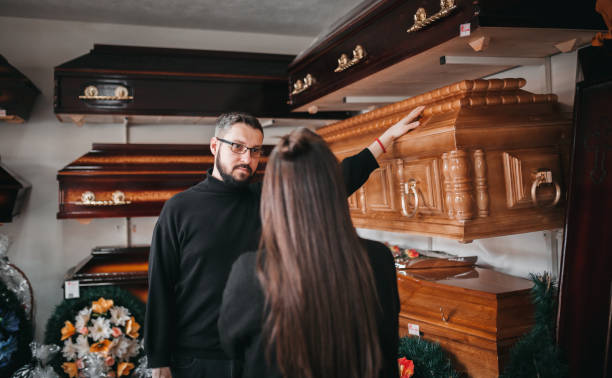Over the past few decades, cremation has steadily grown in popularity across the United States and many other parts of the world. Once considered a less traditional or alternative choice, cremation is now the preferred option for many families making end-of-life decisions for their loved ones. In fact, according to recent statistics, cremation now accounts for more than half of all funerals in the US, a cultural shift from previous generations.
But what’s behind this growing trend? Why are more families choosing cremation over traditional burial? The answer involves a mix of practical, emotional, and even spiritual reasons.
Cost and Affordability
One of the most cited reasons families opt for cremation is the cost. Traditional burials can be expensive. Between purchasing a burial plot, a casket, embalming, a headstone, and other associated services, costs can run into the thousands or even tens of thousands of dollars. Cremation, on the other hand, tends to be more affordable. Direct cremation (without a viewing or service) is the most economical option, but even when families choose to include a memorial service or urn, the overall expense is often significantly less than a full burial.
In times of financial uncertainty, this factor alone can play a major role in decision-making. For many families, Arlington Cremation Services allows them to honor their loved one in a meaningful way without incurring overwhelming financial burdens.
Flexibility in Memorial Planning
Cremation offers flexibility which traditional burial simply doesn’t. When someone is cremated, families aren’t bound to hold services within a few days, as is often the case with burials. Instead, they have time to grieve, gather loved ones, and plan a memorial or celebration of life that feels right, whether it’s days, weeks, or even months later.
This flexibility is particularly helpful for families who are spread out across the country or the world. Scheduling a gathering that accommodates everyone becomes far more manageable when there’s no immediate timeline pressing against the arrangements.
Environmental Considerations
More and more families are becoming mindful of the environmental impact of traditional burial practices. Burials often involve embalming chemicals, non-biodegradable caskets, and land use that can leave a lasting ecological footprint. For those seeking a greener option, cremation can feel like a more sustainable choice, especially when paired with biodegradable urns or scattering ashes in natural locations.
Some people even take it a step further by opting for water cremation (alkaline hydrolysis), a newer method considered more environmentally friendly than traditional flame cremation. While not yet available everywhere, it’s part of a broader trend of families seeking end-of-life options that align with their values.
Shifting Cultural and Religious Attitudes
Historically, some religions discouraged or even prohibited cremation. But those attitudes are evolving. Many faith communities that once frowned upon the practice have become more accepting, recognizing that families have diverse needs and beliefs. The Catholic Church, for example, now permits cremation, provided that ashes are treated with respect and kept in sacred places.
Meanwhile, secularism is on the rise, and many people today identify as spiritual but not religious. With fewer people tied to the customs of a particular faith tradition, there’s often more openness to different end-of-life options, including cremation. Families are increasingly focused on celebrating a person’s life in a personal, meaningful way rather than following a set ritual.
Portability and Legacy
Cremation also offers a unique opportunity for families to keep their loved one close. Ashes can be placed in an urn, kept at home, divided among family members, or even turned into jewelry, glass art, or other keepsakes. Others choose to scatter ashes in a location that held special meaning, such as a favorite hiking trail, a body of water, or a family garden.
This ability to create a personal and portable tribute is especially appealing in today’s highly mobile society. With people moving more frequently and living farther from their hometowns, the idea of a fixed burial site may not resonate as strongly. Cremation allows for more personalized and lasting connections to a loved one’s memory.
A Changing Conversation Around Death
Perhaps one of the biggest factors influencing the rise of cremation is the cultural shift in how we talk about death. Conversations around end-of-life planning have become more open and normalized. As families become more involved in making decisions and exploring options, they’re asking questions and seeking choices that reflect their values, budgets, and emotional needs.
Cremation has emerged as a choice that supports personalization, flexibility, and affordability, three things that matter greatly to modern families. Whether it’s a quiet scattering ceremony in a beloved place or a lively celebration of life with music, photos, and stories, cremation allows space for creativity and meaning.
Conclusion
While there is no “right” way to honor a life, cremation offers an increasingly popular alternative to traditional burial that meets the needs of many modern families. From affordability and environmental consciousness to spiritual freedom and practical convenience, cremation is resonating with people from all walks of life.
As society continues to evolve and people continue to personalize how they say goodbye, cremation is likely to remain a significant and growing part of how we honor our loved ones after death.

